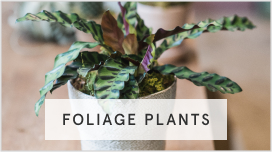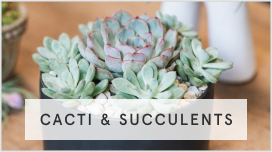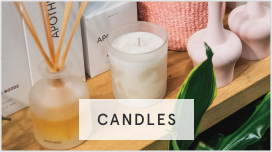Houseplants and the Mind-Body Connection

Houseplants and the Mind-Body Connection
There’s bliss to be found in the most unexpected places. Perhaps a garden isn’t quite one that’s so out of the ordinary, given its reputation for peace, calm, and tranquility. Yet while people often invite plants into their home for their decorative benefit, it’s worth noting that greenery may also play a significant role in improving both physical and psychological health.
That plants invoke feelings of joy isn’t surprising. They’re traditionally associated with special occasions and often used to commemorate and celebrate achievements. They’re nature’s most abundant feel-good gifts — but they’re far more than just pretty faces. Studies have drawn conclusions about the humble houseplant’s ability to boost spirits, improve productivity, elevate well-being, reduce anxiety, and increase focus.
Exposure to the outside world has, after all, proven to have tangible effects on health and peace of mind. Natural light boosts vitamin D, walking barefoot creates immediate contact with the planet, and green spaces can ease feelings of distress. These are favorable advantages, indeed, and they call attention to an intrinsic connection with nature.
Natural Air Purifiers
Nature is no wallflower, but even those who don’t spend considerable time outside can take advantage of all that it has to offer. Houseplants add depth and character to living spaces, but they also offer a certain degree of practicality. They fill gaps where necessary, providing homeowners with a sense of mental satisfaction. They may also provide significant health benefits.
A NASA study published in 1989 screened a variety of common plants to determine their ability to purify the air of specific chemicals. Among those contaminants tested were common indoor pollutants like benzene, formaldehyde, and trichloroethylene. Plants like English ivy, peace lily, mother-in-law’s tongue, bamboo palm, ficus, Chinese evergreen, and gerbera daisy were put to the challenge.
After comprehensive testing and analyzation, researchers determined that houseplants could efficiently remove many of these common air toxins by absorbing pollutants from the potting soil. It can be surmised, then, that incorporating common houseplants into the living space may have a positive impact on indoor air quality. Prioritizing other important factors, such as limited use of chemicals in the home and sufficient ventilation, can bolster the plants’ potential to make a difference.
The benefits of clean indoor air are vast. Those residing in properties with compromised indoor air quality are more likely to experience serious health effects if they’re exposed to the pollutants on a regular basis. Symptoms like congestion, dizziness, headaches, eye irritation, and fatigue are commonplace.
Moreover, chronic exposure to contaminants can trigger or worsen conditions associated with respiratory health, including asthma. Those with pre-existing medical concerns may also experience aggravated symptoms, as well as those with compromised immune systems. People may also develop sensitivities to contaminants that were not present before.
Responses vary from person to person. If symptoms are disrupted when the person leaves the premises, it’s likely that such a response is connected to some type of indoor pollutant. Identifying the root cause of the problem is vital to resolving the symptoms. Adding houseplants to a space may encourage cleaner air and reduce the severity of discomfort.
Natural Mood Lifters
Beyond its potential physical benefits, the humble houseplant may also reduce symptoms of physiological despair and mental stress. The general consensus has long suggested that introducing plants to the living space or workspace can have a tremendous positive impact on areas where people may need improvements, like motivation, productivity, and anxiety.
The role of the houseplant is significant in that it replicates a connection with nature by inviting a hint of the outside to the dwelling. Given the profound benefits of spending time outside, it makes sense to establish new ways of connecting with those benefits. The modern world, however, is rife with technological advancements that render many common reasons to escape a thing of the past. Socialization, work, and entertainment are all possible to enjoy within the confines of the home.
For all of its advantages, technology may invite stress into people’s lives, too. While many cannot imagine living without the benchmarks of modern society, including social media platforms and online shopping, those same advancements may also have a negative impact on health and well-being.
The Stress in America™ survey conducted by the American Psychological Association finds that some 99% of adults own some type of electronic device and that at least 74% possess a smartphone. Constant connection has increased to mass levels, and most people feel comfortable utilizing technology independently.
Yet the report also finds that people struggle to find balance in their lives when they give too much energy to the digital universe. Distractions, worries, and detachments are all common side effects of unbridled use of technology.
The flip side of the coin is that recognizing the pitfalls of the modern world invites opportunities for change, growth, and exploration. In expanding one’s personal universe, there’s an opportunity to look beyond the four walls of a room and the glossy screen in front. Plants provide a natural solution for those who want to break away from those personal stresses — whatever the source may be — and reconnect with nature at its most humble and beautiful.
Research finds that it can make a difference. Indoor plants may eliminate overwhelming feelings of stress and improve cognitive health. Less stress can contribute to more positive physical health benefits, such as reduced blood pressure and a more stable heart rate. Reducing chronic mental chaos may also reduce a person’s chances of developing certain conditions as they grow older.
Indeed, studies have concluded that interacting with indoor plants may reduce the effects of both psychological and physiological stress. Greenery is found to soothe and promote feelings of comfort and calm. And the very same soil that contributes to cleaner indoor air may also be responsible for those benefits.
Researchers from University College London and Bristol University found that a common bacterium that resides in the soil, Mycobacterium vaccae, could trigger the production of serotonin in the brain. The chemical, which improves mood and may even help cognitive function, is naturally produced in the body. Those who suffer from depression experience a significant decline in serotonin activity. Therefore, this activation could be beneficial for those interacting with plants and, in greater proximity, with the soil.
Establishing Bonds With Nature
So-called “natural contact” begins with an understanding of the many pathways to embracing the world’s natural beauty. It’s possible, for example, to venture out into the green space of a park or a field and take in the surroundings. It’s likely this is not a daily activity for most, however.
This highlights the importance of establishing bonds in a more balanced manner. Spending time in the wilderness, going on hikes, and tending to the landscape can all bring you eye to eye with nature at its best and brightest. But it’s not always possible to partake in those activities regularly.
Creating balance begins by introducing other elements into your world. Peeking at the garden a few times a day satisfies your visual needs. Bringing aromatic flowers into your home satisfies your olfactory needs. Listening to the birds chirp as they perch on the trees overhead satisfies auditory needs. Addressing these various desires contributes to your spectrum of exposure to nature.
The disconnect for the mind and body occurs when that relationship comes to an abrupt end. To continue reaping its rewards, assembling plant life inside the home can make a considerable difference. The key to success, however, is to establish a space that doesn’t cause stress. A room or wall full of uncontrolled plant life requires far more care and attention than most have to give and can contribute to chronic worry.
By contrast, an assortment of a select few plants — the right plants that you can capably maintain — can contribute to a healthier living environment that benefits both the body and the mind. That may mean selecting those that resonate with you on a more personal level and not necessarily because of the way they efficiently pull xylene from the air.
Factors like color, fragrance, and style all play significant roles in improving the quality and character of a living space. Incorporating vibrant plants in the entryway of a home or apartment can transform the tone of the entire dwelling. Hanging a plant in a kitchen or dining area allows nature to coexist in a subtle and inviting manner. Scented plants, such as lavender, produce heady aromas that please the senses and inspire rest and relaxation. They’re ideal to place in the bedroom.
In areas where productivity is the focus, such as the home office, eye-catching plants provide the perfect level of detail without competing with other elements in the room. Spider plants, snake plants, and English ivies are all common additions that bring a sense of ease to busy professional’s lives, particularly in cluttered spaces that may not otherwise see much light and sunshine. Placing succulents on the desk can also have an impact on mental health and well-being for their artisanal quality and enduring appeal.
Interacting with houseplants on a regular basis — introducing them to the living space and making them an integral part of the home — can have enormous benefits, both physically and psychologically. As visual stimuli, they elicit a sense of joy. On a deeper level, however, they may provide even greater benefits. In an increasingly wired world, it’s advantageous to unplug and reconnect with the great outdoors however possible.












